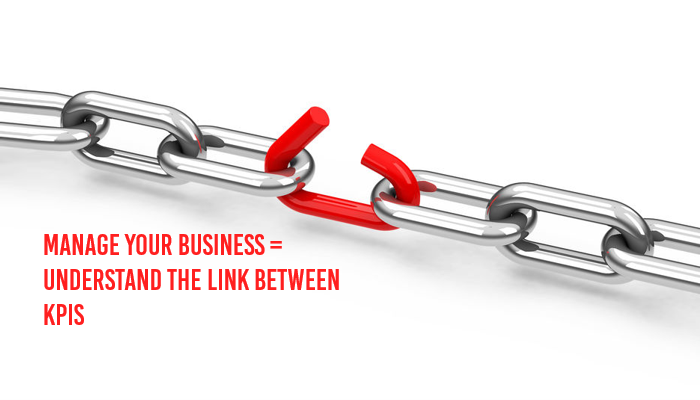The urgency of making the connections between store's performance indicators
How a retail/area or a store manager should read his business model to be able to take the right actions
KPI
8/27/20254 min read


In retail, there is a philosophy of learning called "learning by doing". Practice makes perfect, another well-known motto in the industry. On the other hand, how does a store manager make the right decisions?. Not one or more decisions. But the GOOD! The one that should help him achieve his goals. The decision should allow it to read its dashboard of performance indicators. These are the same performance indicators that guide him in his choices in order to manage the men and women of the team, sales and customers.
Like the pilot in the cockpit, the store manager must be able to understand his performance indicators in order to activate the right levers to bring the aircraft, its crew and passengers to port.
When the miracle of analyzing performance indicators is not (really) a miracle!
Imagine that you board a short-haul flight (1.5 hours of flight maximum). The passengers are relaxed, the crew smiling, the captain reassuring with his very mature voice. The sky is completely clear, a beautiful sun, no or little wind. The plane is full: 155 passengers and 5 crew members. It's a beautiful afternoon at noon in January. The captain is an instructor on this model of aircraft. He has been flying since he was a teenager. All performance indicators are green. All that remains is to make a beautiful and short trip. And yet less than 3 minutes, the plane ditched in emergency on a river...
This is the incredible story of US Airways Flight 1549, on January 15, 2009, which took off from New York's La Guardia airport and landed on the Hudson River a few minutes later after colliding with a flock of wild geese.
And yet all the indicators were green
And the "miracle" happened because no one before Commander Chesley Sullenberger had achieved such a feat. To ditch an aircraft that is not a seaplane, without breaking it at the three "weakest" parts of an aircraft (cockpit, wings and tail of the aircraft), all without a single death to deplore.
On the other hand, miracle is not the case. The commander had learned by doing. He had learned to read his performance indicators when the unforeseen situation caused them to go into the red. He was able to make the link between each measurement indicator and understand the consequences. But above all, by a good reading of his dashboard, he knew what decisions to make to have a positive impact on the result.
The driver is the store manager. However, he has never learned to read his performance indicators. At best, he understands them. But from there to linking them together, and especially to being able to make an analysis on the right levers to achieve your results, is another story.
A minority of directors trained in the reading of performance indicators
This is the paradox of retail and its "learning by doing" philosophy. Every day, managers are confronted with the relentless coldness of performance indicators. They are challenged and incentivized on it. And yet not one (or few) is really able to make the link between them. And above all, to understand the causes in order to apply the right deeds like our commander Sullyberger.
The 5 main performance indicators constantly measured in the performance of a store manager
CR – conversion rate – A measure of the number of buyers over the number of visitors expressed as a percentage (10 people buy out of 100 people who entered = (10/100) x 100 = 10%)
The U. P.T – Unit per transaction
L AvB – Average Basket = the average number of items per transaction x the average price
Retention rate = % of local customers who return to buy within a given period (usually 6 months or 1 year) after their last purchase
Cross-selling = the number of items from different categories in the same transaction
And this is where it gets complicated
The AvB is the consequence of a good UPT, a good cross-selling, if you cross-sell products with high average prices... So more than a performance indicator, it is first and foremost a result indicator.
Then what are the levers to, for example, increase the conversion rate: The obsession of every merchant. There are an infinite number of them, of course. On the other hand, one is underestimated: it is to bring in more traffic - because at a constant rate you would have more buyers. And here's the thing: the store manager's belief is that he cannot/little influence the "quality" of the traffic.
Cognitive biases impact performance indicators
Two cognitive biases explain this:
The bias of the illusion of control. This bias consists of believing that one has control or influence over external or random events. Brands are convinced that only branding can influence traffic. And they use other performance indicators to do this. Not those of the Store Manager. Except today, an SEO strategy, in which the store's team would be an actor, would make sense, in particular by managing a mini blog, or by pooling social media levers, a community of experts and knowledge of its customers
Belief bias judges the logic of an argument based on the truth or falsity of its conclusion. The strong belief that shops cannot influence their traffic is ancestral. Because the reasoning was before the emergence of the web. And for more than 20 years, the measurement indicator is more related to a choice: local sales or physical sales. See an addition of the two models that we will call omnichannel strategy. However, by working on a few social selling levers, brands would have a lot to gain on another winning axis: web to store
At Cloud Business School, we don't talk very well about the cognitive biases that pollute sales and consequently performance indicators.
3 things to remember
Each manager must be able to link the different links in the chain of cause and effect and identify which SEO rules could impact the result of his store
Be aware of the cognitive biases that impact the brain in the analysis of performance indicators
Knowing the definition of performance indicators without making the link between them is like knowing all the buttons in an airplane cockpit without ever having flown before.
Actually not 3 but rather 1 thing to remember
To manage is to choose! Choosing the right decision that will have the most impact on my result. It means being able to make the link between performance indicators, causes and results. It's a simple analysis but one that few store managers actually do. AND every time an unforeseen event impacts their result, it's the safe who can. It's a virus that is closing all the shops. More traffic. So more conversion rates. Fortunately, the captain of US Airways flight 1549 was able to make the right decisions by reading these performance indicators, when the unforeseen event of a flight of geese caused him to lose the two engines of his plane in the middle of takeoff.


